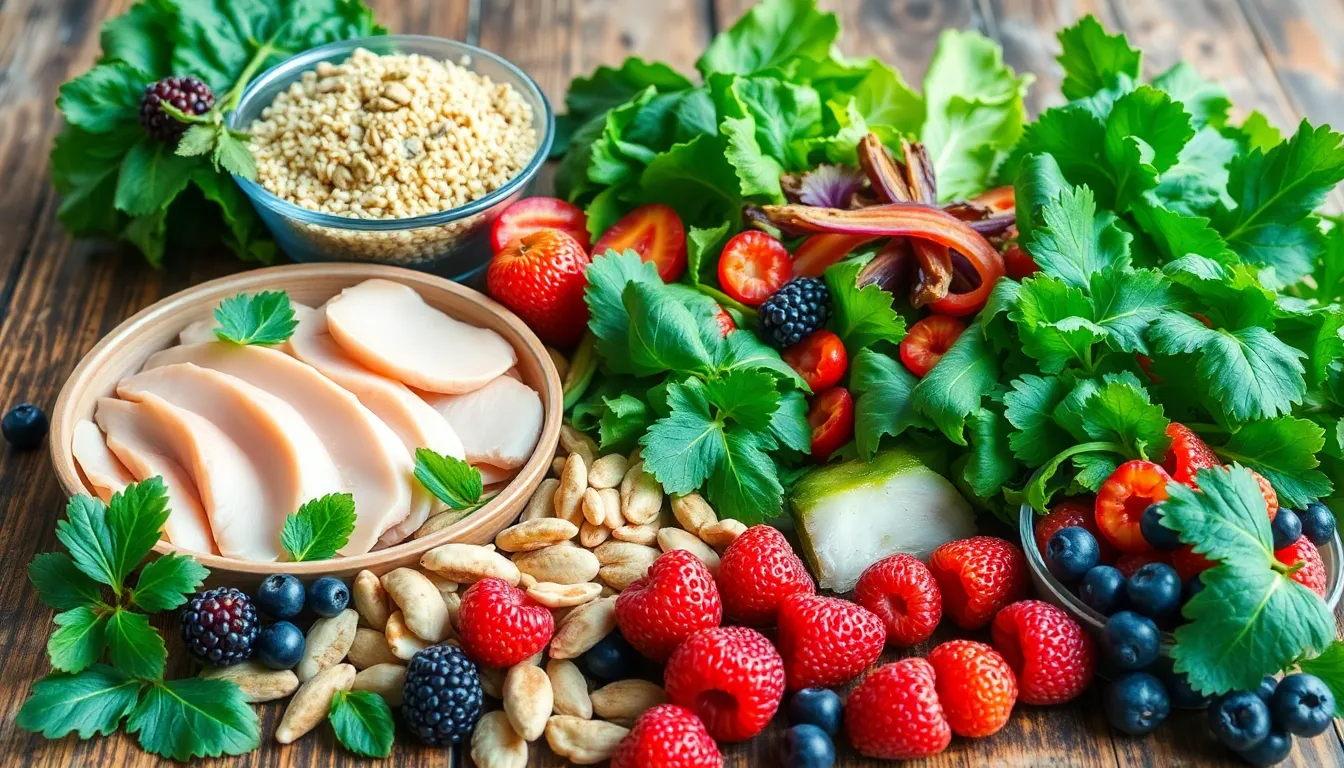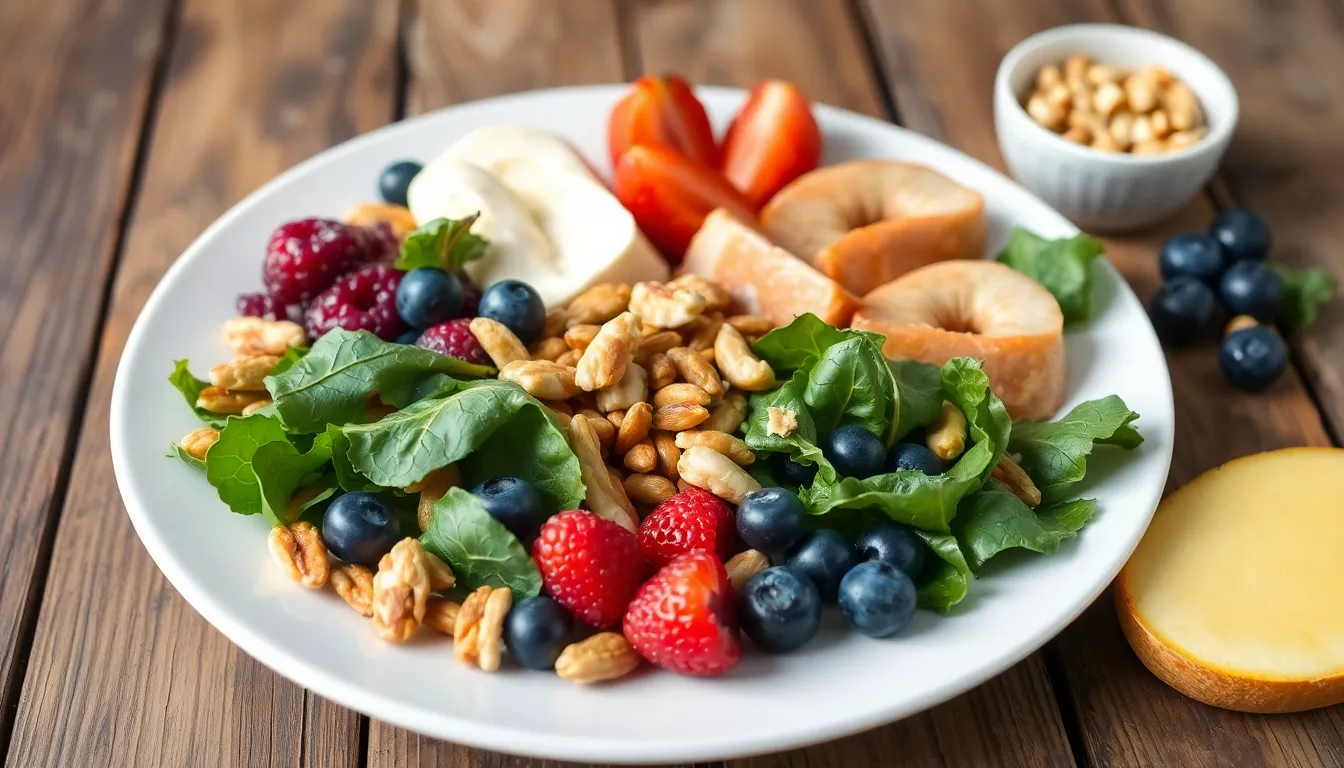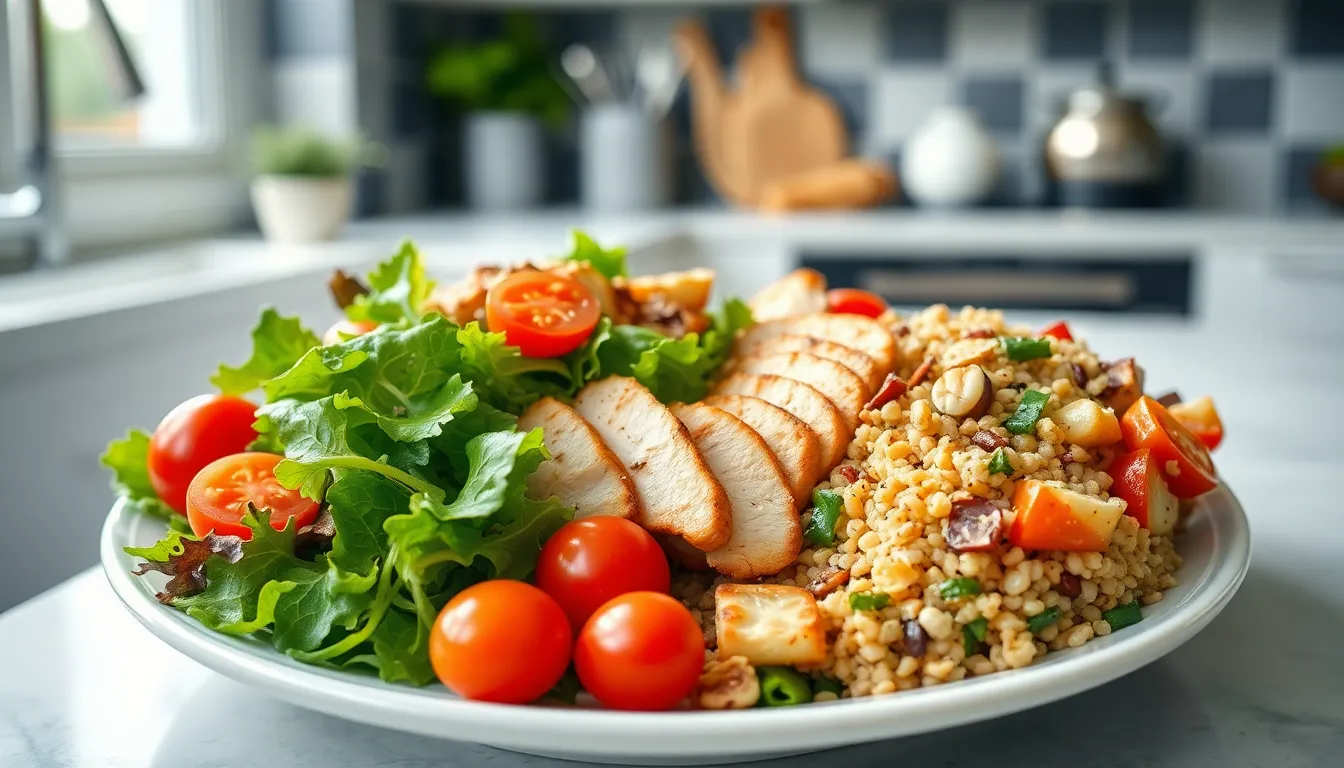Table of Contents
ToggleIn a world where sugar seems to sneak into everything like that one friend who always tags along, low sugar meals are a breath of fresh air. Imagine a plate full of vibrant veggies, lean proteins, and flavors that dance on your palate without sending your blood sugar on a rollercoaster ride. It’s not just about cutting back; it’s about savoring every bite while giving your body the love it deserves.
Understanding Low Sugar Meals
Low sugar meals focus on reducing added sugars while emphasizing nutrient-dense ingredients. These meals prioritize whole foods, vibrant vegetables, and lean proteins, creating satisfying dishes without unnecessary sugars.
What Are Low Sugar Meals?
Low sugar meals consist of options with minimal added sugars. Foods like leafy greens, whole grains, and lean meats qualify as staples in these meals. Fruits such as berries provide natural sweetness without excessive sugar. Meals that incorporate healthy fats from sources like avocados and nuts enhance flavor and satisfaction. Choosing low sugar alternatives can significantly support a healthier lifestyle.
Benefits of Low Sugar Meals
Low sugar meals offer several advantages for overall health. Lowering sugar intake can stabilize blood sugar levels, reducing cravings for more sugary foods. Significant benefits include improved energy levels and better weight management. Reducing sugars also promotes heart health by decreasing risks linked to elevated blood sugar. Additionally, prioritizing nutrient-rich foods contributes to better digestion and enhanced mental clarity, enhancing daily productivity.
Ingredients for Low Sugar Meals


Low sugar meals focus on nutrient-dense ingredients while minimizing added sugars. Selecting the right foods enhances both flavors and health benefits.
Whole Foods to Incorporate
Leafy greens include spinach and kale, which provide essential vitamins. Whole grains such as quinoa and brown rice contribute fiber and aid digestion. Lean proteins, including chicken breast and beans, support muscle maintenance. Nuts and seeds like almonds and chia seeds offer healthy fats that satisfy hunger. Berries, such as strawberries and blueberries, bring natural sweetness and antioxidants. Using avocados in dishes delivers creaminess along with beneficial fats. Incorporating these whole foods preserves nutritional value while keeping sugar content low.
Foods to Avoid
Processed foods often contain hidden sugars, leading to unnecessary intake. Sugary beverages, including sodas and energy drinks, spike blood sugar levels and lack nutritional benefits. Refined grains like white bread and pasta strip away fiber and important nutrients. Snacks such as candy and cookies are typically high in added sugars. Condiments like ketchup and certain salad dressings frequently contain excessive sweeteners. Eliminating these foods fosters a more nutritious and balanced diet, helping to achieve low sugar meal goals.
Meal Ideas and Recipes
Low sugar meals offer a world of delicious options. Exploring creative recipes provides a satisfying culinary experience without added sugars.
Breakfast Options
Start the day with scrambled eggs mixed with spinach and tomatoes. These vegetables add vitamins and minerals while keeping sugar low. Overnight oats made with unsweetened almond milk and topped with berries supply a naturally sweet flavor. Greek yogurt paired with chia seeds and walnuts offers protein and healthy fats for energy. Smoothies blending spinach, avocado, and a small banana make for a refreshing morning boost.
Lunch Choices
Salads bursting with leafy greens like kale or romaine serve as excellent bases. Grilled chicken or chickpeas can enhance protein content. A quinoa bowl featuring roasted vegetables brings fiber and essential nutrients. Adding a drizzle of olive oil and lemon juice provides flavor without excessive sugars. Lettuce wraps filled with turkey or tuna offer a low-carb alternative that’s satisfying and fresh.
Dinner Suggestions
Stir-fries with mixed vegetables and tofu present a quick and nutritious option. Opt for cauliflower rice as a low-carb substitute for regular rice. Baked salmon with asparagus delivers omega-3 fatty acids and antioxidants. Stuffed bell peppers filled with ground turkey and black beans create a colorful, healthy meal. Zucchini noodles topped with marinara sauce and grilled chicken keep dinner light and delicious.
Tips for Success
Effective strategies enhance the success of low sugar meals. Incorporating simple approaches makes it easier to maintain healthy eating habits.
Meal Planning Strategies
Planning meals ahead of time streamlines the preparation process. Setting aside a specific day for meal prep can save time during busy weeks. Focusing on a variety of ingredients, such as lean proteins and colorful vegetables, keeps meals exciting. Utilizing containers for storage helps portion control and makes grab-and-go options available. Experimenting with new recipes weekly can introduce different flavors while adhering to low sugar principles.
Reading Nutrition Labels
Interpreting nutrition labels is essential for selecting low sugar foods. Checking the total sugars section helps identify added sugars in products. Comparing serving sizes ensures accurate understanding when assessing calorie content. Aiming for items with five grams or less of added sugar per serving promotes healthier choices. Spotting ingredients like high fructose corn syrup and cane sugar indicates potential hidden sugars. Taking time to scrutinize labels empowers individuals to make informed decisions aligned with low sugar goals.




